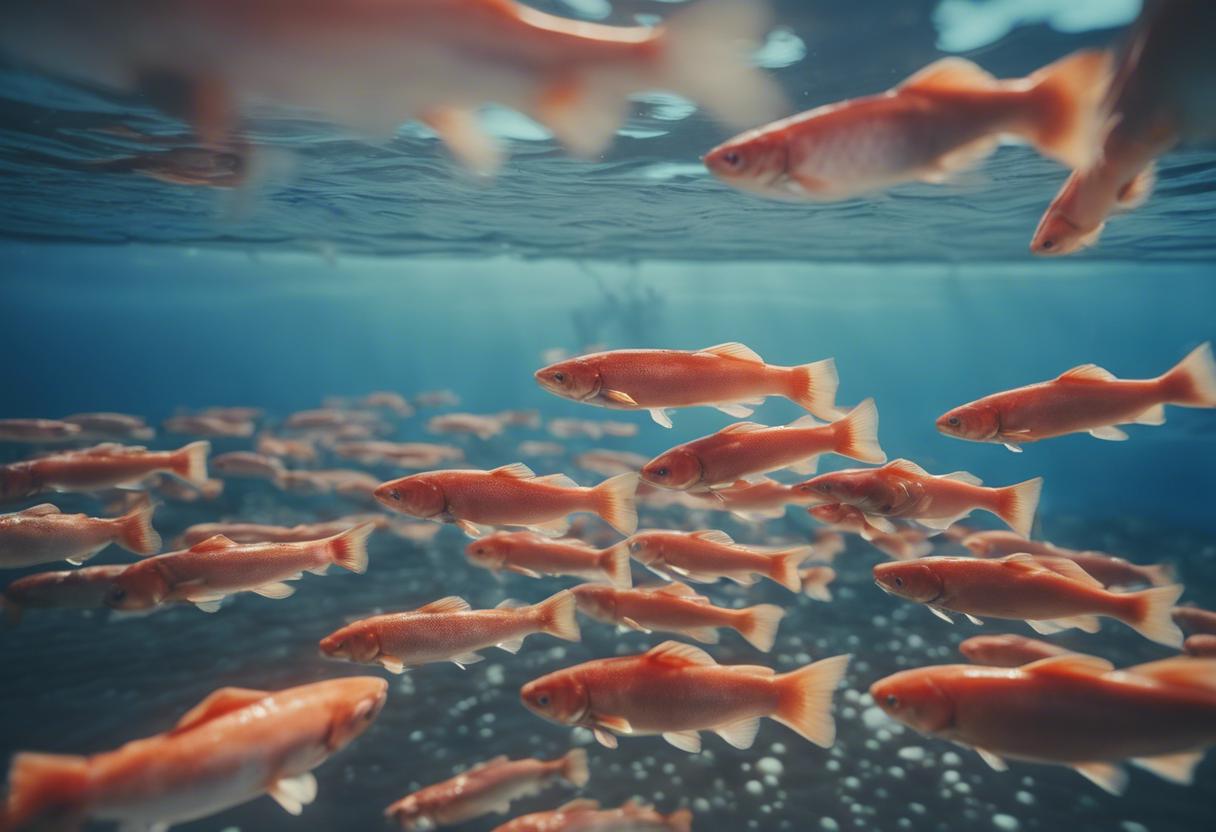When purchasing or consuming salmon, a common question is “Is it farmed or is it wild?” However, the times when wild salmon was broadly accessible in Irish fishmongers, supermarkets, or eateries are over.
Currently, the salmon available in Ireland is almost always farmed, and there’s a growing trend towards branding it as “organically farmed salmon”. The conditions under which these fish are reared can be a source of debate.
Farmed salmon imported from places like Scotland, Norway, or the Faroe Islands is increasingly prevalent. Although it is often marketed as Irish due to it being processed or smoked in Ireland. Farmed Irish salmon are typically grown in large cages in shallow sea water or harbours, often located along the western seaboard and accommodate many thousands of fish.
The production of organically farmed salmon generally implies fewer fish per cage, minimised use of antibiotics, stringent pesticide usage, and the adoption of natural solutions for sea lice (a prevalent issue), such as introducing “cleaner fish” like wrasse or lump fish. In order to be designated as organic, these salmon farms need to be certified. A recent incident involving the escape of thousands of Atlantic farmed salmon from a cage damaged by rough weather in Killary Harbour was reported. These escaped fish were categorised as organic by the Mannin Bay Salmon Company.
Can one still find wild salmon? To a limited extent, the answer is yes. In 2007, drift-netting wild fish from the sea was prohibited in Ireland due to a sharp decrease in salmon returning to their native rivers. Drift-netting is still allowed from June to July each year in certain rivers and estuaries, yet the catches are relatively small. Usually, such catches command a higher price.
The precarious condition of local species restricts salmon fishing to only 45 of 149 identified salmon rivers, which implies that around 80% of the fishes are subjected to “catch and release” by fishing enthusiasts. So, why does aquaculture raised eyebrows?
While it’s recognised that fish, a bountiful source of protein essential for the burgeoning world populace, is sustainably acquired through farming considering the relentless poaching of indigenous species worldwide, reality presents a different picture. Farming practices like the employment of synthetic colourings, harmful pesticides, and certain feeds have been the source of much criticism. Contributing factors include the vast amount of required feed components like krill or sprat, potentially disrupting the food chain, impacting wild salmon along with other marine life. The controversy also extends to the usage of fish meal and salmon oil from wild species. Anticipated damage could also hit shellfish due to chemicals deployed for disease control.
The validity of using open cages is under increasing scrutiny, leading several nations to prohibit such manufacturing systems and approve the use of closed cages on land instead, or deep-sea locations. Not to mention, the issue of escaped fish.
What hazards do these escapees pose?
Inland Fisheries Ireland exhibits constant worry whenever escaped farmed salmon invade freshwater rivers and lakes. These fishes pose a substantial threat to wild Atlantic salmon populations, particularly during spawning season, a tradition dating back to the Ice Age.
The indigenous salmon population of each river carries distinct genetics. Crossbreeding with farmed salmon may lead to genetic contamination of the local salmon, which could hinder their long-term endurance, particularly in a setting where the wild population is dwindling due to multiple factors, such as global warming and water pollution.
The escapees from Killary have now been found in seven fishing rivers, even with efforts to eradicate them in recent times. Anglers are encouraged to tag the fishes and forward them to Inland Fisheries Ireland for assessment, including genetic analysis. They pose no threat to human well-being since they’re unlikely to be sold, although Galway Bay Against Salmon Cages reported several fish appeared infected and had lesions.
Then the question arises, how critical is salmon farming to Ireland?
In 2021, Ireland’s aquaculture industry generated a sizeable €175 million revenue from 38,000 tonnes of aquatic produce, predominantly composed of organic salmon valued at €109 million. Representing the industry, the Irish Farmers Association stated that this segment provided employment to roughly 2,000 people directly, with an additional 16,000 jobs indirectly forming part of seafood processing and marine-related operations. This significant economic activity is essentially managed by Norwegian global giant, MOWI, the leading producer of farmed Atlantic salmon. It possesses an estimated market dominance of 80-85% in Ireland and operates production sites from Donegal down to Cork.
Despite this, Ireland’s aquaculture yield remains marginal in comparison to production levels in Norway, Scotland, and the Faroe Islands. The director of Salmon Watch Ireland, John Murphy, suggests that the Irish market may not be as well-suited for salmon farming due to elevated mortality rates witnessed during the farming process. He references instances with mortality rates up to 45% on selected farms, often attributed to climatic conditions and warm water. This severe contrast to other locations where death rates typically stay in single-digits raises questions about Ireland’s suitability for large-scale salmon farming.

